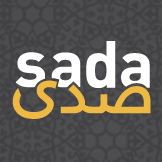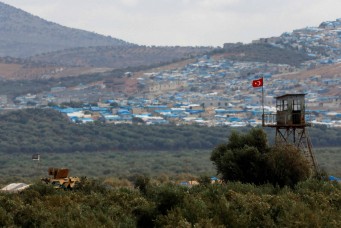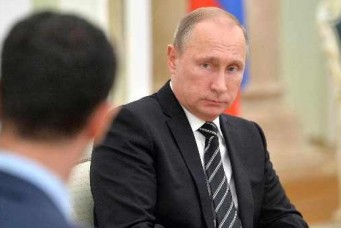Changes in Syria’s Armed Opposition
The promise of Western military support and a shared opposition to Russia’s intervention are driving Syrian opposition forces to unite and—for many of them—move away from extremist rhetoric.
The armed opposition groups in Syria have seen significant changes over the past few months, largely in response to the Russian intervention and the subsequent and unprecedented commitment Western and regional states have shown to a political transition. The latter’s reactions include increasing military support for the Free Syrian Army (FSA), which had grown weaker over the past few years. These efforts to support moderate Syrian opposition formations are lessening the appeal of fundamentalist Islamist rhetoric among the armed opposition. Large extremist factions like Ahrar Al-Sham and Jaish Al-Islam are beginning to soften their fundamentalist and sectarian rhetoric, while smaller scattered groups—like Suqour Al-Ghab, Tajammou Al-Izza, Brigade 111, Jabhat Al-Inqaz, the 101st Infantry Division, the Forsan Al-Haq Brigade, and others—have unified into larger alliances.
Many opposition groups initially took on Salafi-jihadi characteristics to gain support. In many cases, their manifestations of fundamentalism were not a true embrace of Salafi-jihadi ideology, but rather a way to obtain money from wealthy donors in the Arab Gulf. In light of meager Western support for moderate forces, small factions had to adopt Salafi-jihadi symbolism and slogans to ensure protection from powerful Salafi-jihadi forces that were ready to eliminate any groups that differed from them. Thus, the strength of extremist factions, including Al-Qaeda-linked groups, grew—while the FSA, which maintained nationalist and moderate Islamist rhetoric, was losing support.
The FSA became even weaker between July 2014 and February 2015, when Jabhat Al-Nusra, in cooperation with the Al-Qaeda-linked Jund Al-Aqsa group, targeted a number of FSA factions that received support from the United States—including the Syria Revolutionaries’ Front, the Hazzm Movement, Tajammou Al-Izza, Suqour Al-Ghab, and the Suqour Al-Jabal Brigade. These groups were not able to counter these attacks and protect their territories. As a result, the Syrian Revolutionaries’ Front and the Hazzm Movement were annihilated, and the other factions were weakened. By October 2015, Russian air strikes dealt a further blow to FSA factions, including Tajammou Al-Izza, the 13th Division, and the Suqour Al-Jabal Brigade, all of which were already weakened by attacks from extremist groups.
But the Western response to the Russian strikes may be signaling a change for the FSA. Support from Saudi Arabia and the United States has flowed to these factions since October, particularly in the form of anti-tank TOW missiles. These deadly missiles were delivered to FSA factions, among them Brigade 13, Brigade 101, Brigade 46, and the Forsan Al-Haq Brigade, placing the spotlight on these groups again. Western and Gulf Arab support for the Syrian opposition is enabling them to effectively counter the Syrian army’s new big ground attacks, supported by its Iranian allies under cover of Russian air strikes.
The promise of Western military support and a shared opposition to Russia’s intervention are driving local forces to unite and—for many of them—move away from extremist rhetoric. The U.S. administration announced on October 9, ten days into Russia’s military campaign, that it was shifting its support to Arab rebel commanders of existing Syrian units. Hoping to benefit from this shift in U.S. policy, a number of opposition groups formed new national coalitions and abandoned religious banners and emblems. One such group is the newly formed Jaish Al-Sham. The group, formed on October 9, 2015, contains “dozens of small battalions across the arena,” according to its commander, Mohammed Talal Bazerbashi. Jaish Al-Sham, whose founders were once high-ranking members of Ahrar Al-Sham and Jabhat Al-Nusra, adopted the slogan, “A revolution against tyrants and extremists,” in reference to the Al-Assad regime and the extremist organizations. It also adopted the flag of the Syrian Revolution as its banner—an important shift from the black and white banners that refer to Salafi-jihadism.
Three former FSA factions—Suqour Al-Ghab, Regiment 111, and Jabhat Al-Inqaz—also announced that they were unifying under the banner of Jaish Al-Nasr on October 24. The Democratic Forces of Syria and the New Syrian Army also formed in the past two months. These groups receive arms and ammunition from the United States, according to an announcement by a spokesman for the international coalition against the Islamic State. Also, on December 8, 2015, just one day before a conference aimed at uniting the factions fighting against the Syrian government began in Riyadh, the 101st Infantry Division and the Forsan Al-Haq Brigade merged, establishing the Northern Division. These alliances highlight the growing tendency by small, scattered, and non-Salafi-jihadi factions to form larger coalitions to benefit from the new U.S. policy.
Diplomatic efforts aimed at ending the Syrian conflict have also motivated opposition groups to move away from Salafi-jihadi rhetoric. Notably, these include Jordan’s plans in the wake of the Vienna talks to develop a list of terrorist groups in Syria and Saudi Arabia’s efforts to bring political and armed opposition forces together. Radical opposition factions are distancing themselves from extremism and extremist groups to avoid being on the terror list. The best example of this is Ahrar Al-Sham. Over the past few years, Ahrar Al-Sham, which is currently considered the strongest armed faction in Syria, was an ally of Jabhat Al-Nusra and other jihadi forces. As recently as June 2015, the movement refused to participate alongside moderate groups in the “Aleppo Operations Room,” a joint operation of Syrian rebel factions in Aleppo, instead forming their own command center with Jabhat Al-Nusra.
In fall 2015, a gradual shift began in Ahrar Al-Sham’s approach as it became increasingly aware of the political role it could potentially play in the country. Labib Nahhas, the group’s chief of foreign political relations, wrote two articles in the Washington Post and the Telegraph, denying accusations of terrorism and links with Jabhat Al-Nusra and calling on the United States to provide support. Ahrar Al-Sham is also refuting allegations of carrying out violations and war crimes in Syria, saying that “such actions contradict the movement’s policy.” On November 18, the group dissolved its Sharia body, ensuring that internal authority would instead lie with the political bureau, which is more moderate and interested in taking the movement from the Salafi-jihadi sphere to the corridors of political participation.
Hoping to gain a seat at the Vienna talks in October, Ahrar Al-Sham joined 29 other armed factions in signing a statement favoring a political solution based on the outcomes of the Geneva II Conference. Ahrar Al-Sham also attended the Riyadh conference, seeking to speed up its transition to perceptions of moderation and to avoid being put on the terror list that Jordan is currently preparing. Ahrar Al-Sham announced its withdrawal from the Riyadh Conference on its second and final day because of what they considered an underestimation of their “real weight” as reflected by their representation at the conference. However, it ultimately came back to sign the conference’s final statement calling for a new “pluralistic regime that represents all sectors” in Syria, which shows that the movement clearly had high expectations that they would get to play a big role in upcoming negotiations and the political transition.
Yet Ahrar Al-Sham’s efforts to move away from the Salafi-jihadi current and closer to the moderate opposition are still abstract. Firmly establishing a clear non-Salafi-jihadi stance could divide its ranks and bring an end to some of its existing alliances. The Al-Qaeda-linked Jund Al-Aqsa already withdrew from the Jaish Al-Fatah alliance—of which Ahrar Al-Sham and Jabhat Al-Nusra are currently members. In its reasoning, the group cited Ahrar Al-Sham’s support for projects that it considered “counter to Islamic Sharia”—such as encouraging Turkish intervention to create a safe zone in Syria and signing on to a statement by the international envoy to Syria, Staffan de Mistura.
Continued international and regional efforts to negotiate a solution, together with support for moderate opposition, could help lessen the appeal of extremism among the armed opposition. This could even lead to the emergence of a flexible, coherent political interlocutor who is capable of maintaining the momentum of Vienna talks—and ultimately achieving a successful political transition.
This article was translated from Arabic and is reprinted with permission from Sada. It can be accessed online here.
Salam Al-Saadi is a Palestinian-Syrian journalist and researcher focused on political and economic affairs in the Middle East, particularly in Syria.





